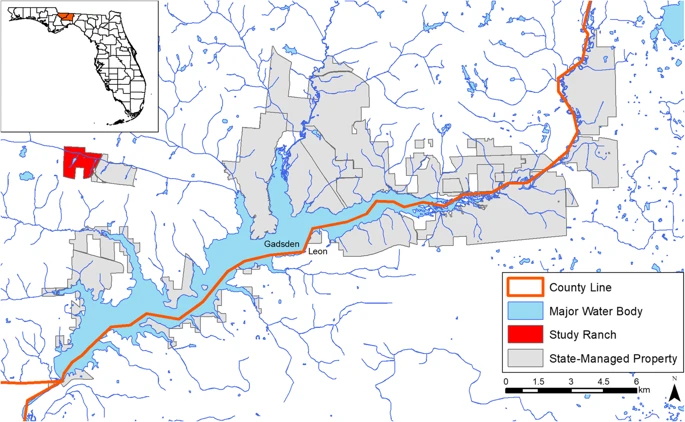
BLACKBURN, DINH – Living la Vida T-LoCoH: site fidelity of Florida ranched and wild white-tailed deer (Odocoileus virginianus) during the epizootic hemorrhagic disease virus (EHDV) transmission period
Emily T. N. Dinh, Allison Cauvin, Jeremy P. Orange, Rebecca M. Shuman, Samantha M. Wisely & Jason K. Blackburn
Article first published online: 16 MAR 2020 Movement Ecology
DOI: 10.1186/s40462-020-00200-2
ABSTRACT:
Background
Epizootic hemorrhagic disease virus (EHDV) is a pathogen vectored by Culicoides midges that causes significant economic loss in the cervid farming industry and affects wild deer as well. Despite this, its ecology is poorly understood. Studying movement and space use by ruminant hosts during the transmission season may elucidate EHDV ecology by identifying behaviors that can increase exposure risk. Here we compared home ranges (HRs) and site fidelity metrics within HRs using the T-LoCoH R package and GPS data from collared deer.
Methods
Here, we tested whether white-tailed deer (Odocoileus virginianus) roaming within a high-fenced, private deer farm (ranched) and native deer from nearby state-managed properties (wild) exhibited differences in home range (HR) size and usage during the 2016 and 2017 EHDV seasons. We captured male and female individuals in both years and derived seasonal HRs for both sexes and both groups for each year. HRs were calculated using a time-scale distance approach in T-LoCoH. We then derived revisitation and duration of visit metrics and compared between years, sexes, and ranched and wild deer.
Results
We found that ranched deer of both sexes tended to have smaller activity spaces (95% HR) and revisited sites within their HR more often but stayed for shorter periods than wild deer. However, core area (25% HR) sizes did not significantly differ between these groups.
Conclusions
The contrast in our findings between wild and ranched deer suggest that home range usage, rather than size, in addition to differences in population density, likely drive differences in disease exposure during the transmission period.
Read the full publication at Movement Ecology.